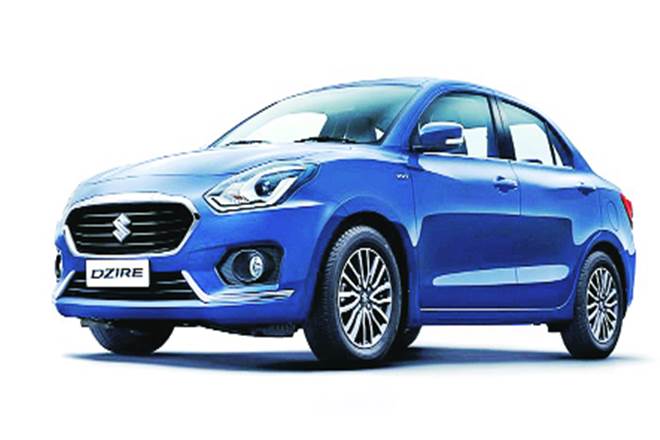The Indian sub-four-metre sedan segment has an interesting history. It was born out of a legislation that allowed small cars to qualify for lower excise duty. In his 2006 Budget speech, the then finance minister P Chidambaram had said, “…I propose to reduce the excise duty to 16%, but only for small cars. A small car, for this purpose, will mean a car of length not exceeding 4,000mm and with an engine capacity not exceeding 1,500cc for diesel and 1,200cc for petrol…”
The speech didn’t mention the body shape of a ‘small car’—it could be a hatchback or a sedan!
Quick to exploit Indians’ craze for sedans, Tata Motors shortened Indigo sedan’s boot, reducing its length to 3,988mm, and passed on excise duty cut benefit to customers. Thus was born the Indigo CS (Compact Sedan)—India’s first sub-four-metre sedan. However, it was Maruti Suzuki which made the segment popular, with its sub-four-metre Swift Dzire.
Also Watch:
2008

When it was launched in March 2008 for Rs 4.49 lakh for the petrol and Rs 5.39 lakh for diesel, the Swift Dzire wasn’t a sub-four-metre sedan. Essentially, Maruti had added a boot to the 3,760mm long Swift hatchback. The new car was 4,160mm long and replaced the Esteem—the sedan Maruti sold since the mid-1990s. Customers found value and sales took off. By September 2011, within three-and-a-half years of launch, 3 lakh Swift Dzire cars were running on Indian roads.
2012

In February 2012, the second-generation Swift Dzire arrived. It had a restyled front to differentiate it from the Swift. At 3,995mm, it was 165mm shorter than the model it replaced, and thus qualified for excise cut benefit. Prices started at Rs 4.79 lakh for the petrol and Rs 5.8 lakh for the diesel.
Shortening the length meant a smaller boot—316 litres. It wasn’t much, but was big enough to hold a small family’s luggage. The new car was far more refined than the one it replaced, and sales shot up. By January 2015, it touched cumulative sales of 9 lakh units.
2015

In February 2015, it underwent a facelift: new bumper, restyled fog lamps, new grille.
The petrol engine was tweaked for higher fuel-efficiency (20.85kpl instead of 19.1kpl) and the diesel got revolutionised—it delivered 26.59kpl instead of the earlier 23.4kpl, making the Swift Dzire diesel the most fuel-efficient car in India—a title it later lost to Celerio diesel and Ciaz SHVS.
Prices were competitive—petrol started at Rs 5.07 lakh and diesel at Rs 5.99 lakh. The improvements meant the car had become so Dzire-able that it became India’s second-best seller after the Alto. By March 2017, it had sold a cumulative of 13,81,323 units.
2017

On May 16, the third-generation model will be launched—it’s called the Dzire, not Swift Dzire. Unlike previous models, in the new Dzire the boot doesn’t look like an after-thought, but is neatly integrated with the body. The car is 105kg lighter. “Its rigid structure is due to the use of high-strength steel in its construction, and the lower weight will translate into better performance and fuel-efficiency,” says CV Raman, executive director, Engineering, Maruti Suzuki India.
A hexagonal grille and sweptback headlamps give it an upmarket stance. Chrome has been used, but in a subtle way. “People want chrome, but we have toned down its usage. The interior gets a wood finish,” adds Raman. The new flat-bottom steering wheel is the most noticeable change inside the cabin, and the centre console gets a touchscreen system with Apple CarPlay and Android Auto.
While it remains a sub-four-metre sedan, Maruti has increased its width by 20mm and wheelbase by 40mm. This has led to 50mm more knee-room at the rear. Raman adds that, in India, people also use the Dzire as a chauffeur-driven car, so “improving the rear legroom was important.”
Likewise, the boot space has been increased by 60 litres. The Dzire petrol will now be available with an automated-manual transmission (AMT) option. Earlier, the AMT came only on the diesel, which will continue. Maruti also claims a lot of safety features have been introduced—it’ll be equipped with dual airbags, seatbelt with pre-tensioners, anti-lock braking system with EBD and Isofix child seat anchor points as standard.
However, the most important change is that the Dzire has separated itself from the Swift. “It is more streamlined, more sedan-like, more authentic,” adds Raman. “The brand Dzire has become so strong, it doesn’t need the moniker Swift. It has evolved from a Swift-with-a-boot to a full-fledged sedan.”
vikram.chaudhary@expressindia.com

